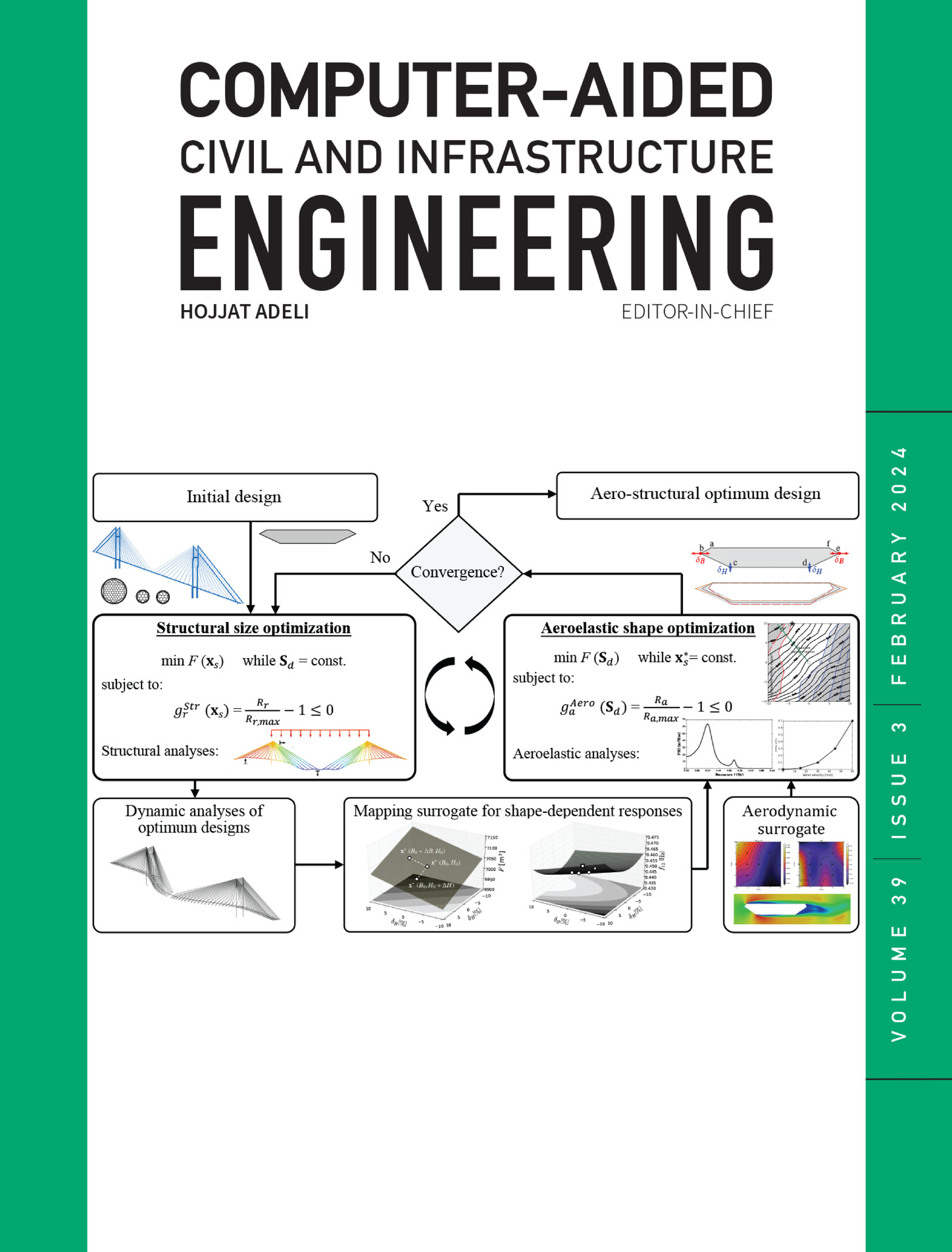Bridge damage identification using a small amount of damage labeling data
IF 8.5
1区 工程技术
Q1 COMPUTER SCIENCE, INTERDISCIPLINARY APPLICATIONS
引用次数: 0
Abstract
This paper proposes a method for bridge damage identification using a small amount of damage labeling data. This method first trains a deep neural network (DNN) with undamaged bridge inclination responses as inputs and bridge equivalent loads as labels. The ratio curve related to the bridge damage state can be obtained by quantifying the change in the DNN prediction error before and after bridge damage. Then, this method achieves the efficient calculation of ratio curves corresponding to different damage states based on finite element static simulation, and damage index curves calculated based on ratio curves are used to produce bridge damage localization labeling data to achieve bridge damage localization. Finally, the quantification of bridge damage can be achieved by only calculating the ratio curves of different damage degrees at the damage location. The proposed method not only overcomes the limitations of high modeling cost, low efficiency, and poor robustness to measurement noise and modeling errors of the finite element dynamic simulation method in producing damage labeling data to some extent but also can achieve bridge damage localization by using only the damage labeling data of a single damage degree at each damage location, and can achieve the approximate prediction of multi-damage locations without including multi-damage localization labeling data. The feasibility of the proposed method under conditions of unknown loads, a small number of sensors, and the presence of modeling errors and measurement noise is verified by numerical simulations.求助全文
约1分钟内获得全文
求助全文
来源期刊
CiteScore
17.60
自引率
19.80%
发文量
146
审稿时长
1 months
期刊介绍:
Computer-Aided Civil and Infrastructure Engineering stands as a scholarly, peer-reviewed archival journal, serving as a vital link between advancements in computer technology and civil and infrastructure engineering. The journal serves as a distinctive platform for the publication of original articles, spotlighting novel computational techniques and inventive applications of computers. Specifically, it concentrates on recent progress in computer and information technologies, fostering the development and application of emerging computing paradigms.
Encompassing a broad scope, the journal addresses bridge, construction, environmental, highway, geotechnical, structural, transportation, and water resources engineering. It extends its reach to the management of infrastructure systems, covering domains such as highways, bridges, pavements, airports, and utilities. The journal delves into areas like artificial intelligence, cognitive modeling, concurrent engineering, database management, distributed computing, evolutionary computing, fuzzy logic, genetic algorithms, geometric modeling, internet-based technologies, knowledge discovery and engineering, machine learning, mobile computing, multimedia technologies, networking, neural network computing, optimization and search, parallel processing, robotics, smart structures, software engineering, virtual reality, and visualization techniques.

 求助内容:
求助内容: 应助结果提醒方式:
应助结果提醒方式:


